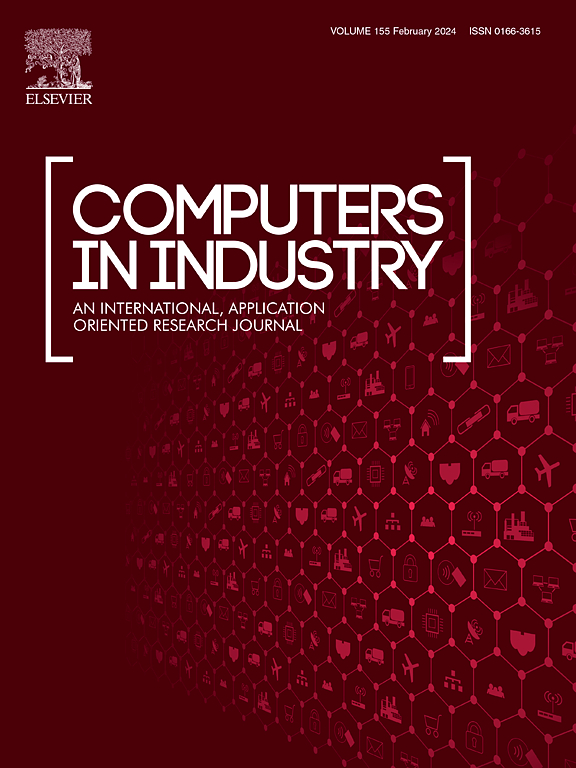TDAD:利用两阶段扩散模型进行自我监督式工业异常检测
IF 8.2
1区 计算机科学
Q1 COMPUTER SCIENCE, INTERDISCIPLINARY APPLICATIONS
引用次数: 0
摘要
视觉异常检测因其显著的有效性和效率,已成为实际工业生产中非常适用的解决方案。然而,它也带来了一些挑战和不确定性。针对异常类型的复杂性和数据标注的高成本,本文基于两阶段扩散模型,介绍了一种名为 TDAD 的自监督学习框架。TDAD 由三个关键部分组成:异常合成、图像重建和缺陷分割。它采用端到端训练,目的是提高异常点像素级分割的准确性,降低误检率。通过从正常样本中合成异常点,设计基于扩散模型的重建网络,并结合多尺度语义特征融合模块进行缺陷分割,TDAD 在具有挑战性且广泛使用的数据集(如 MVTec 和 VisA 基准)上实现了一流的图像级检测和异常点定位性能。本文章由计算机程序翻译,如有差异,请以英文原文为准。
TDAD: Self-supervised industrial anomaly detection with a two-stage diffusion model
Visual anomaly detection has emerged as a highly applicable solution in practical industrial manufacturing, owing to its notable effectiveness and efficiency. However, it also presents several challenges and uncertainties. To address the complexity of anomaly types and the high cost associated with data annotation, this paper introduces a self-supervised learning framework called TDAD, based on a two-stage diffusion model. TDAD consists of three key components: anomaly synthesis, image reconstruction, and defect segmentation. It is trained end-to-end, with the goal of improving pixel-level segmentation accuracy of anomalies and reducing false detection rates. By synthesizing anomalies from normal samples, designing a diffusion model-based reconstruction network, and incorporating a multiscale semantic feature fusion module for defect segmentation, TDAD achieves state-of-the-art performance in image-level detection and anomaly localization on challenging and widely used datasets such as MVTec and VisA benchmarks.
求助全文
通过发布文献求助,成功后即可免费获取论文全文。
去求助
来源期刊

Computers in Industry
工程技术-计算机:跨学科应用
CiteScore
18.90
自引率
8.00%
发文量
152
审稿时长
22 days
期刊介绍:
The objective of Computers in Industry is to present original, high-quality, application-oriented research papers that:
• Illuminate emerging trends and possibilities in the utilization of Information and Communication Technology in industry;
• Establish connections or integrations across various technology domains within the expansive realm of computer applications for industry;
• Foster connections or integrations across diverse application areas of ICT in industry.
 求助内容:
求助内容: 应助结果提醒方式:
应助结果提醒方式:


